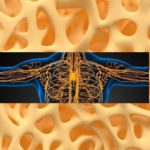Researchers identify genes that could affect children’s bone growth

Many children anticipate reaching the next number on a measuring stick as they chart their growth. But measurements can be frustrating or stressful for children who have skeletal disorders that prevent bones from growing.
Key findings
- Researchers used genome-wide association studies and CRISPR gene editing to see if alterations to cartilage cells, which are known as chondrocytes, could affect bone growth.
- They found 145 genes that alter chondrocyte proliferation and maturation.
- They hope their finding leads to more research on the genetics of bone growth and ultimately therapies for growth disorders.
A different kind of number raises the possibility that there someday could be treatments for those disorders: 145. It’s how many newly discovered genes researchers believe are connected to the regulation of bone development. More research is needed, but scientists can now use the finding as a jumping-off point to better understand the biological pathways of skeletal growth.
“It is my hope that with a better genetic understanding, we can try to create therapeutics for people who have differences in the way their skeletons grow,” says Nora Renthal, MD, PhD, medical director of Boston Children’s Bone Health Program and the principal investigator of the study.
20,000 knocked-out genes led to 145 interesting ones
Genome-wide association studies (GWAS) from the Genetic Investigation of Anthropometric Traits (GIANT) consortium have identified thousands of genetic locations associated with height in more than five million people, according to Renthal. Those studies helped broaden the understanding of genetics and skeletal growth, but it’s still been difficult to translate genetic associations to the biological mechanisms behind bone growth.
Renthal and other researchers — including five colleagues from Boston Children’s Division of Endocrinology — wanted to use those GWAS to focus on the genetic characteristics of chondrocytes, the cells responsible for the growth and maintenance of cartilage. Specifically, they wanted to see if alterations in the growth and maturation of chondrocytes can cause variations in height. These alterations would occur in genetic disorders that affect a child’s growth plates, where chondrocytes stack on top of each other and help elongate bones.
Chondrocytes interest other researchers
Learn how orthopedic researchers are looking at chondrocytes to “grow” cartilage as a way to help people who have degenerative joint disease.
With the GWA studies as a foundation, the team deployed CRISPR gene editing technology to see what would happen if they knocked out, in one fell swoop, each of the 20,000 genes in a chondrocyte genome. To find genetic factors of chondrocyte immaturity and maturity, the researchers set two time points: early and late in the chondrocyte growth cycle.
The team then used a cell-surface marker of chondrocyte maturity to sort cells whose knockout led to early or late chondrocyte maturation. Sorting the cells based on their maturation allowed the team to then use DNA sequencing to determine which cell deletions artificially delayed or accelerated maturation of chondrocytes.
Together, these studies identified 145 genes that altered chondrocyte proliferation and maturation, as the researchers described in a study published in Cell Genomics.
Sharing data to further understand bone development
Among the 145 genes, some have already been identified in other studies as having mutations that affect the development of cartilage in mice — similar to the skeletal disorders in the human growth plate. That assured the researchers that they were on the right track, Renthal says.
The study’s lead author, John Baronas, a research assistant in Renthal’s lab, created an open application for researchers to view each of the 145 genes at either one of the two time points and where each one is associated with the growth plate. Renthal hopes other researchers can build upon the findings to further understand the biological pathways that chondrocytes follow to influence skeletal disorders. It’s going to take more than one research team, she says, to get to the bottom of what affects bone growth.
“If we better understand the genetics of the growth plate, there could be real functional differences that can be identified, leading to ways that we could intervene.”
Learn how the Bone Health Program treats children with skeletal disease.
Related Posts :
-

Another use for mTOR inhibitors: Preserving vanishing bones in Gorham-Stout syndrome
The mTOR pathway is fundamental to nearly every cell in the body. It drives processes related to cell growth, protein ...
-

My story of bouncing back from osteochondritis dissecans
Injuries suck — no better way of putting it. The physical pain is terrible on its own, but emotionally they can ...
-

Chloe navigates Marfan syndrome with a positive attitude — and a responsive care team
Chloe Burian has always defied expectations. Despite surgeries and other treatments for several conditions that stem from the genetic disorder&...
-

‘Worth the trip’: Aiden and his family found help for chronic pain in Boston
Aiden Kozak loves playing volleyball — and he’s good at it. He was even recently named one of the top 50 ...





